 The journey of horsemanship is all a learning journey. When I say horsemanship, I’m not referring to just the riding piece. I’m referring to the care and stewardship of our equine friends. Learning to listen to our horses. Learning to listen to ourselves and putting it all together. I strongly believe the adage “When you know better, do better.” Sometimes, we need to pause and listen to what we are saying. What does it actually mean? Does it even make sense? The horse industry is notorious for being about tradition. This is the way we have always done it, and this is the best way. I have noticed that also applies to mindset and in return the things we say. I should preface this by saying that the owner and trainer in this scenario are very well intended. I do believe they want the best for the horse, and they are simply presented with a new learning opportunity (as we all have been and will be). Let me set-up a scenario for you. A horse has been reactive on the ground near the right side of the girth. Under saddle, that horse is irritated, not able to turn well to the right, and has presented to crow hop and buck some. The horse spends some time with the trainer and is ridden a handful of times. The trainer reports to the owner that after a couple rides, the horse finally gave up and would bend to the right and not buck. Let’s break that down a minute and think about what was said. The horse finally gave up. That would imply that the horse was intentionally behaving a certain way and decided to comply. OR the horse decided to comply because it was defeated and did not feel heard. Which is it? To determine that you must look at the whole picture. The horse was reactive on the ground in a specific area and behaved a certain way only when specifically asked to bend or move that specific area. That is a red flag that there is a physical issue. There are times when differentiated between physical and behavioral can be tricky. However, this was a clear-cut case. The main influencer here was the fact that the horse was reactive on the ground and the behavior was consistent under saddle only on the same side of reactivity. On this journey, I have come to determine that the fairest mindset to have is to always assume it is a physical issue first. The horse indeed has physical restrictions that would indicate the type of behavior he was presenting. Behavior is communication. He was communicating that it was painful to move a certain way and was asking to be heard. The types of restrictions he had included fascial adhesions preventing abduction of the right shoulder and nerve impingement in the brachial plexus and phrenic nerve. In addition, his entire ribcage was compressed on the left side and pushed out to the right. I was grateful the owner asked me to come look at the horse. She was open to learning the information about the horse and supportive of helping him heal. Horses are so kind and gracious with us. The truly try to do the best they can, but they will communicate when something is hard. It could be hard for them emotionally or physically. When you know better, do better. Listen to what you are saying. Thank you for your commitment to helping our horses be happy and healthy. Blessings, Amy
0 Comments
Deworming Recommendations
There is a lot of information out there about the best approach to deworming your horse. My aim is to provide you with information to assist you in determining what works best for you and your horse, while always coordinating with your veterinarian. Deworming protocols are specific to each horse because each horse is a unique individual. Your horse’s immune system, gut bacteria, and living environment play a big role in their ability to maintain a healthy parasite load. Notice there how I said, “Healthy Parasite Load” not “Free of Parasites”. Most horse owners are familiar with the life cycle of worms. However, some horse owners aren’t aware that a particular type of worm can migrate through the bloodstream and nest under the lumbar vertebrae in the back. This of course has the potential to directly affect your horse’s ability to perform. What? Yes. This is called a worm aneurysm, and we will get to that later. There is also the debate of chemical wormers vs. herbal wormers, and I will touch on that also. First, let’s start with a practical approach to evaluating your horse’s worm load. Fecal Egg Counts or FEC, are becoming more widely used. They can be conducted by your vet or there are a few options where you can mail a sample in. I order my FEC tests from SmartPak. They provide everything you need (even a container and spoon) to collect the sample and, the postage is paid. FEC’s are a good starting point, but you also need to be aware that you can’t rely on the results to give you a 100% accurate account of your horse’s current parasite load. The manure sample is a snapshot of what’s going on in your horse’s body and the number of eggs it contains is easily affected by the inflammation present on the day/time of the sample. It should also be noted that the FEC does not account for tapeworms or bots, both worm types that can have serious health consequences. However, I still consider FEC to be a valuable tool to provide us with more information. If you have recently purchased a new horse, or have not conducted a FEC in the past, I recommend you perform 3 tests over a period of 3 months. If possible, collect the samples at the same time each day. This will give you more of an idea of what type of shedder your horse is. Horses are classified as High, Medium, and Low shedders of worm eggs. This information can be helpful in determining the frequency and the protocol to take when developing your deworming protocol. When you are first starting your FEC, I recommend you follow the frequency recommended by you vet based on the shedder classification you horse has been assigned. Your vet will likely recommend a class of chemical wormer to best treat the stages and types of worms present in the FEC. That being said, let’s shift into the chemical vs. herbal wormer discussion. If we must utilize non-holistic practices with our horses, I personally use the risk vs. benefit thought process. Because I have seen some very negative physical effects in horses with bots, tapeworms, and worm aneurysms, I utilize chemical wormers at the smallest amount and frequency possible for my horses. Chemical wormers have been shown in studies to detox from tissues easily and in humans are actually shown to be beneficial in ways other than deworming. I most commonly use Zimectrin Gold (Ivermectin and Praziquantel ) for my horses. My horses are all consistently classified as Low Shedders and my vet advises deworming twice per year for tapeworms and bots. I do not personally recommend anyone use Quest or Quest Plus. I have seen some very adverse reactions to those products. Chemical wormers are still chemicals, and anytime we introduce chemicals into our horse’s bodies, it is a wise thing to provide a detox. A couple easy and safe approaches to this are administering liquid bentonite clay (or powder that is hydrated) at a rate of 1 ounce per day once per day for 4-5 days. Please remember that bentonite clay will not allow the body to absorb anything for up to 2.5 hours after giving it. I recommend not giving it at the same time as other supplements or medications your horse is taking. Another option is to feed one handful of dandelion leaf once per day for 10 days. So does this mean I am opposed to herbal wormers? No. I think herbal wormers can be useful when fed to a horse that has shown a trend to be a Low Shedder. However, I have not seen evidence that they are a solely reliable source of eliminating tapeworms or the large strongyle larva that can migrate to the mesentery artery and cause a worm aneurysm. What’s a worm aneurysm? I’m glad you asked. A worm aneurysm, or Verminous Arteritis(I just noticed this is mentioned on the back of the Zimectrin box!), occurs when the Large Strongyle Larva migrate into the mesentery artery and nest under the L2-L3 vertebrae in the back. The degree of the worm aneurysm is graded 1-4, with 4 being the most severe and the vertebrae becoming fused. Two questions probably came to mind, is this reversible? And, what causes it? The answer to the first question is, it depends. If the worm aneurysm is a Grade 1-2, it is usually resolved with a specialized worming treatment involving a Panacur PowerPak and an Osteopathic session to clear the artery. Unfortunately, Grades 3-4 can only be helped by preventing the larva to do any further damage to the artery, but the vertebrae are usually fused by that point. I have worked with several horses with Grades 3-4 who are able to comfortably be ridden at a lower impact discipline. The cause of worm aneurysms is confirmed to be due to a large parasite load of Large Strongyle, but there also seems to be an element of lifestyle and diet that play a factor. Horses who are continuously under stress, fed an inflammatory diet, and wormed regularly are still at risk. This is a good reminder of how powerful inflammation is in the body. If you suspect your horse may have a worm aneurysm, it is best to consult an Osteopathic Practitioner and your vet. Blessings, Amy In early April my childhood horse, and lifelong friend of 27 years (Lancelot), passed over at the age of 30 to receive his renewed body and eternal life with our Father. As with all things, I felt God was showing me important parts of the entire process that I needed to share with you. You see, learning to process grief is not just about the grief. It’s about all the other emotions you experience throughout your life too. If grief is not processed like it needs to be, it will adversely affect other areas of your life…including how you experience joy. As a society, we are not comfortable with and try not to discuss something that at some point we will all face… grieving the passing of a beloved animal. I hope this will give you some insight and possibly provide some support and healing to those who have also experienced the passing of a beloved animal.
Prepare Where Possible While you are in the middle of enduring the pain of a passing or planning to help an animal pass, is not the best time to make decisions on arrangements for burial or veterinary support. It’s a difficult subject to think about, but I encourage you to think through what works best for your situation. Have numbers of contacts on hand so you are not scrambling to find phone numbers for mobile veterinarians or burial services. When the time came that we determined we needed to help Lancelot pass, I was grateful I had already determined we would enlist the help of our longtime friend and veterinarian to make a farm call and arrange cremation. Each person’s situation may vary depending on the services in your area, where your horse lives, and your personal wishes. Please take some time to think through what will work best so you don’t have to add those decisions to an already incredibly difficult time. How do you know it’s time? I think one of the hardest decisions we must make as stewards of animals and beloved friends, is when it is time to help them pass. There is no one size that fits all answer. I once had a dear veterinarian friend tell me that it is rarely too soon, and that has been my experience. If your horse is not able to live out their life in a happy and pain-free manner, you should evaluate all the factors. Sometimes it can be helpful to have a trusted friend or wellness team member to seek their opinion. When we are really close to our friends, it’s common that we can be blinded to the reality of the situation. When I knew it was time for Lancelot, only part of me would accept it. The other part of me was blocked and reasoning as to why it was not time. What I realized was that the blocked part of me was scared. I was scared of the process, scared of the hurt I would endure, scared of… Once I realized that the only reason the blocked part of me was not in support of me helping Lancelot pass was my own selfish fear, I knew I had to be brave to do the very kindest thing any of us could ever do. Healing Afterwards Allow yourself to grieve. I mean really grieve. Don’t put yourself in situations that you will have to subdue emotions. This may involve you taking time off work for a week or more. When the emotion to cry comes up and it is subdued, it will manifest itself later in a more intense way with some unresolved feelings attached to it. With the passing of Lancelot, I truly allowed myself to cry when and where I needed to. To be honest, I still have days I cry. But the reality is, I will always have days I cry. That’s how grief works. You never “get over it”. You learn to find a duality of living a joyful life while also having the hurt of them not being present with you sometimes pop up…and that’s a completely healthy and normal response. It is important to remember that everyone has a specific way they need to process grief. Remember those 5 Stages of Grief we’ve all heard of: denial, anger, bargaining, depression, and acceptance? Those were developed from a study of people who were diagnosed with a terminal illness and had limited time remaining. Those are NOT the way we all grieve and it’s unfortunate that we have all learned them as “The Way” everyone processes grief! The processing of grief is very individualized because we are individuals, and our brains are all unique. It’s normal that you will bounce around between all the stages in different orders and could have your own stage as well. Let’s talk about the brain for a moment. When you experience grief, your brain is affected. Yes. There are literal changes in your brain that cause you to have brain fog, feel depressed, feel angry, etc. It’s important to know this if you are supporting a friend, or experiencing it yourself. There is nothing wrong with you…you are healing. Grief is the brain’s survival response, and it needs time. I can completely attest to my brain being affected. I have tried to sit down and write new content for the past 6 weeks, and I wasn’t able to do it. I would just sit at the computer. I finally told myself it was “Ok”. I had to heal how I had to heal and I was open to whatever that looked like. Everyone heals at different rates. As a society, we would think oh that happened two months ago, 6 months ago, a year ago…she should be over that. No, that’s not how grief works. You never “get over it”, and the path to healing is different for everyone. Be gracious with yourself and your friends. Have someone you can talk to. Whether it’s a friend, spouse, or therapist. I had the most healing occur when my husband would ask “How are you doing?” and I would actually answer truthfully how I was doing and what I was feeling. Then I would be that person for him and ask him how he was doing (Lancelot was also a huge part of my husband’s life too for almost 20 years). Perhaps YOU can be that person for your friend. Reach out and ask how they are doing. Truly ask and encourage them to truly answer. This is an excerpt from an article for The American Brain Foundation: “Grief is a normal protective process,” says Dr. Shulman. “This process is an evolutionary adaptation to promote survival in the face of emotional trauma.” Changes in brain function go largely undetected when an individual continues functioning normally, but these experiences still affect how the brain works. [1] I have found it helpful to have goals to be working towards. The structure helped me feel accomplished and like I was still moving forward. When you are in the midst of processing, you feel almost numb and like time stands still. Work towards baby steps on what your brain can be open to and be gracious with yourself. Be gracious with your friends. What do you say? It can be hard to know what to say to support a friend during their grieving period. Most of the time, a simple “I’m so sorry” is the best thing. Don’t make it about you. Acknowledge the passing of your friend’s horse and offer compassion. If you’re not comfortable about saying the right thing, sometimes just being there and not saying much is most helpful. Small acknowledgements like a card, text, or email are extremely helpful to know that other people recognize you are hurting. I had two people say things to me about Lancelot’s passing that will always stay with me. One friend described our relationship as an “Epic Love Story”. The other told me that the passing of our heart horses affects us like no other passing…we never stop the grieving, and that is ok. That’s ok. There was something about hearing someone else say that it was ok to be hurting and there would be times for years to come it may come up that allowed me to be gracious with myself. I am very cognizant about words I use. I do not like to use the words referencing euthanasia such as “Put to Sleep” or “Put Down”. I prefer to use the words “Helping Pass”. I also think we should re-evaluate using the word, Loss. When someone passes, we don’t lose them. I didn’t lose Lancelot. I know exactly where he is. Using the word Loss or Lose makes it sound like an unresolved incident. Just something to think about. I truly believe God sends the exact horses into our lives that we need. I am forever grateful God sent me Lancelot. We grew up together and he taught me things no other horse has. I am focusing on our amazing time together and look forward to seeing him soon. I scattered part of Lancelot’s ashes under the trees in his pasture where he liked to nap. When I would go catch him, I would tell him to meet me at the gate, and he would walk up to meet me. As I scattered his ashes, I remembered those words and realized he would me at a different gate now. The gates of Heaven. I hope this may help some of you out there. Whether you are going through the grief of a horse passing, or you know someone who is. I want to thank you for reading this too. It took me a while to write this, and even now with tears streaming down my face, I find more healing occurring. Blessings, Amy [1] https://www.americanbrainfoundation.org/how-tragedy-affects-the-brain/ 5 Horse Products I Can’t Live Without
Let's talk Compensation Patterns.
You’ve probably heard this term before either in reference to a human or a horse…but What is a Compensation Pattern??? A compensation pattern is an alternate neuromuscular strategy that the body employs when the naturally prescribed neuromuscular strategy is no longer a viable option to use in the creation of a given movement. In other words, when the body is not able to move as it is designed, it will find another way to move and perform. This is an inherent property in our bodies, and it can sometimes be a good thing to keep us going when we have minor discomfort or restrictions. However, if the body moves with a compensation pattern long-term, it can become the new default, and then you can start to have injuries from overusing joints, tendons, ligaments, and muscles. So how do you know if your horse has a compensation pattern? Compensation patterns can be identified by working with someone trained in correct biomechanics, or a body worker. It is also common for me to partner with vets in identifying where the body is showing a weakness utilizing computer gait analysis or flexion tests. After any structural joint, tendon, or ligament lameness is ruled out, we can develop a plan to address the compensation pattern present. Sometimes compensation patterns will cause a mechanical alteration of the gait, or an imbalance. Often, the rider/trainer recognizes that the horse moves easier one direction than another or that one side of a movement is harder than another. What causes them? Most often, a compensation pattern is caused by the body altering movement due to an imbalance (like in the feet, teeth, or from the saddle) or due to pain. It is common for multiple compensation patterns to be present if the horse has been experiencing the imbalance or pain for some time. I call these “Onion Horses” because the rehabilitation of the horse will involve peeling one layer of restriction back at a time and re-training the body. This can become a very involved and tricky rehab process to unwind these patterns. Can some compensations patterns be presented from birth? I believe the answer is yes. There are definite patterns that are seen with most horses. The right side is typically in flexion. This can present with the left scapula up and back, the right scapula down and forward, and the right side of the pelvis forward. Is this from the way the horse is in utero or because of patterns we impose as owners/trainers? That is yet to be determined. The same is true for humans as well. With that concept in mind, I think it’s fair to ask, can an inherited (what I will call default) compensation pattern ever truly be resolved? Or, does the body naturally reset to its default pattern? I believe the body naturally wants to reset to its default pattern. I have observed this in most horses and people for that matter. It seems we can unwind a pattern and teach the body to move in a certain way. However, over time, that improved way to going must be supported. If the horse is under intense training, sustains an injury, is out or work for a period of time, or regular exercises and body work are not maintained, the body seems to resort back to the default pattern. I have seen this over and over again. I have also experienced this with my own body. This does not mean it’s hopeless for horses or humans. This just means we need to recognize that it will continue to take work to maintain the new pattern. Otherwise, the body will resort to its default pattern. One important thing to note, the EARLIER the compensation pattern is addressed, the higher the likelihood that the body will truly integrate the new improved pattern as the default pattern. This is why it is CRITICAL to get you and your horse as balanced as possible as EARLY as possible. I’m talking foals here y’all! In fact, here is some insider information…I have been working with a handful of foals this year documenting the patterns I am seeing. Stay tuned for the findings! How can you help your horse if they have a compensation pattern? The key is to first identify what CAUSED the compensation pattern and address or remove the cause. What is the imbalance? What is the source of pain? Then, you must address the cause(s). After that, I recommend partnering with a body worker and or trainer to develop a rehabilitation plan. The process of healing from a compensation pattern is very much a team effort. It takes commitment from the owner/rider, vet, and body worker. Please remember that it is likely your horse may have a default pattern (especially if they are over the age of 5). Be committed to helping your horse be the best it can be and supporting the healthy pattern. Blessings, Amy No Hoof = No Horse
We’ve all heard this saying at some point in our horse journey. However, we may not have all taken it to heart, and the fact of the matter is, we should. I’m not a hoof care professional, so I want this to come from an equine integrated body worker’s perspective. The long and the short of it is, if the angles of the hooves are not correct, it effects the horse’s WHOLE BODY. This week, I will dive into some details about what specific structures are affected in both the horse’s front end and then the hind end when the hooves are out of balance. For now, let’s talk about what “out of balance” means. For this post, we are referring to the medial/lateral balance of the hoof as well as the bony alignment of the hoof. A happy hoof will land either flat, or in a heel first manner when moving more forward. The horse’s foot was designed to dissipate energy through the back of the hoof. If they are consistently landing toe/heel instead of heel/toe, damage to plantar bones (bones of the hoof and lower/distal part of the leg), ligaments, tendons, and more can occur. Here’s a tip: video your horse with the Slo-Mo feature on your phone. Have someone lead your horse (gravel or concrete is ideal) at a pretty forward walk and take the video from the side. When you replay it, how is your horse landing? If they’re landing toe/heel, their body is not functioning properly. In my next post, I will talk about the front hooves, what structures in your horse’s body that can be impacted from hoof imbalances and some ways your horse could be indicating through their body that problems may be present. Blessings, Amy Today I would like to share a story of a strong little filly named Dixie. A few months ago, I was contacted by Dixie’s owner Dr. Abby Roasa, DVM. She shared with me that Dixie had suffered a direct head trauma resulting in the need for multiple sutures. Dr. Roasa said Dixie’s lacerations were healing well, but she was concerned about the misalignment of her cranial bones and the fact that she was packing feed on the right side of her jaw with inhibited chewing. She was curious if craniosacral work would help Dixie. I agreed that the LISTEN Approach Equine Craniosacral would be a perfect modality to help Dixie heal. Upon introduction at our first session, it was immediately obvious that Dixie had a significant cranial shear (shift/misalignment in the cranial bones) as well as entrapment of the trigeminal nerve. I was unsure how Dixie would respond to her session due to the extent of her injuries and her being only 16 months old. However, during her session, Dixie proved to be an outstanding healer! She had roman horse stretches and yawns for DAYS! We seriously lost track. She was an expert at integrating the shifts happening in her body and had nerve firing all down both sides of her face causing visible fasciculation (twitching). The most impacted bone for her seemed to be the Sphenoid. Dixie’s sphenoid was the most restricted and compressed of any horse I have felt to date. However, we were able to help her balance and decompress it quite a bit. She also had significant releases in the trigeminal nerves down both the left and right side of her face. We agreed to have another session with Dixie in a couple weeks. In the meantime, Dr. Roasa reported that Dixie was chewing much better and packing feed only some of the time. She also noted that Dixie had started playing again in the pasture. During the next session, Dixie improved significantly! I continued to help her rebalance her cranial bones including a full rebalance and decompression of the sphenoid. Some residual trigeminal nerve impingement remained, and we were able to completely release it for her. The second session proved to be more emotional for Dixie, and she laid down at the end of our session and took a nap. Dr. Roasa reports that Dixie is no longer packing feed and is growing up to be a happy and healthy young lady! It was such a blessing and honor to be part of Dixie’s healing journey and Wellness Team. A special thanks to Dr. Roasa for reaching out to me and allowing me to work with her girl. Today I would like to share the story of a strong little filly named Dixie. A few months ago, I was contacted by Dixie’s owner Dr. Abby Roasa, DVM. She shared with me that Dixie had suffered a direct head trauma resulting in the need for multiple sutures. Dr. Roasa said Dixie’s lacerations were healing well, but she was concerned about the misalignment of her cranial bones and the fact that she was packing feed on the right side of her jaw with inhibited chewing. She was curious if craniosacral work would help Dixie. I agreed that the LISTEN Approach Equine Craniosacral would be a perfect modality to help Dixie heal. Upon introduction at our first session, it was immediately obvious that Dixie had a significant cranial shear (shift/misalignment in the cranial bones) as well as entrapment of the trigeminal nerve. I was unsure how Dixie would respond to her session due to the extent of her injuries and her being only 16 months old. However, during her session, Dixie proved to be an outstanding healer! She had roman horse stretches and yawns for DAYS! We seriously lost track. She was an expert at integrating the shifts happening in her body and had nerve firing all down both sides of her face causing visible fasciculation (twitching). The most impacted bone for her seemed to be the Sphenoid. Dixie’s sphenoid was the most restricted and compressed of any horse I have felt to date. However, we were able to help her balance and decompress it quite a bit. She also had significant releases in the trigeminal nerves down both the left and right side of her face. We agreed to have another session with Dixie in a couple weeks. In the meantime, Dr. Roasa reported that Dixie was chewing much better and packing feed only some of the time. She also noted that Dixie had started playing again in the pasture. During the next session, Dixie improved significantly! I continued to help her rebalance her cranial bones including a full rebalance and decompression of the sphenoid. Some residual trigeminal nerve impingement remained, and we were able to completely release it for her. The second session proved to be more emotional for Dixie, and she laid down at the end of our session and took a nap. While she was napping, she kept touching the ground with her nose to integrate shifts she was feeling and test the new nerve responses she had in her face. A video of Dixie napping after her session will be posted on my FB page! Be sure to hope over and watch. Dr. Roasa reports that Dixie is no longer packing feed and is growing up to be a happy and healthy young lady! Please scroll down to see pictures documenting Dixie's recovery. It was such a blessing and honor to be part of Dixie’s healing journey and Wellness Team. A special thanks to Dr. Roasa for reaching out to me and allowing me to work with her girl. Thank you friends for taking time to learn about Dixie's story! Dixie's initial head trauma injury Dixie packing feed on the right side before her first session Temporal Shear (notice the right ear forward) Cranial Shear Before First Session (notice all cranial bones on right side DOWN) After first session (notice how much more symmetrical her cranial bones are!) Temporal Bones After First Session
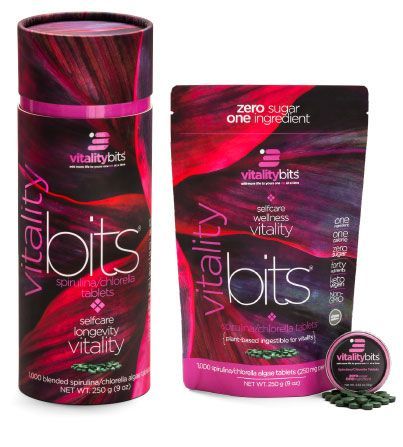 Today I want to share something green with you…algae. Yep, algae. But it is SO much more that just something we think of as green seaweed stuff. Specifically, I want to share with you about Spirulina and Chlorella. I have been a long-time fan on Spirulina. In fact, some of you may have had me recommend you feeding your horse spirulina! Now, I also take both spirulina and chlorella. It is a health game changer, and I want to share this amazing information with you. I believe that keeping our bodies health at a cellular level is the key to them functionally optimally. The nutrients and detoxifying properties of spirulina and chlorella help our mitochondria function and keep our cells healthy. There is no better way to get the ultimate in antioxidants inside our bodies. Hang on for the ride…this is a lot of information, BUT your health is worth it! History of Spirulina Today, so many health issues come from a lack of nutrients in our agriculture. Well, where agriculture falls short, aquaculture is quickly picking up the slack! Spirulina is a type of algae that has been recognized (along with chlorella) as one of the world’s healthiest foods. With a laundry list of research-backed health benefits, including obesity reduction, and immune support, it’s no wonder why so many people are turning to spirulina as a source of balanced nutrition. Scientists have found that Spirulina has “immune-stimulant activities. It is able to increase the production and activity of bone marrow stem cells, macrophages, and T-cells. It improves cell nucleus enzyme activity, and DNA repair capacity. As such, it has a role in cancer treatment and inhibits HIV-1 replication in human-derived T-cell lines” (Ramasubramania Raja, 2016). [1] Other scientists confirm that “Spirulina contains functional compounds, such as phenolics, phycocyanins, and polysaccharides, with antioxidant, anti-inflammatory, and immunostimulating effects”. “Spirulina not only supports the immune system but its ability to reduce inflammation makes it “ useful in the prevention of the metabolic syndrome which is characterized by low-grade inflammation, oxidative stress, and intestinal dysbiosis” [2] Differences Between Spirulina and Chlorella The two most studied and promising types of algae for human consumption are spirulina and chlorella. While they are often mentioned in the same breath, what they do in your body is night and day. Spirulina is particularly good for energy because it has no cell wall. It takes little time to digest, making it an instant source of vitamins and protein. Chlorella, on the other hand, has one of the strongest cell walls in the plant kingdom. It digests very slowly, allowing its high chlorophyll content to detoxify your body. 4 Amazing Health Benefits of Spirulina 1. Better Physical Performance There’s a physical trait that everyone shares. Whether you’re an Olympic athlete or a once-per-year gym goer, we all have limits to how far we can push our bodies. Eventually, your muscles are simply too damaged to continue to function. Research shows that spirulina supplementation reduces muscle fatigue and postpones the point of exhaustion. [5] Spirulina was also found to increase fat loss in healthy adults. Taking a 6-gram dose of spirulina prior to moderate cardio decreased oxidative damage, decreased glucose oxidation, and increased the amount of fat being burned for fuel. [6] 2. Improves Memory Along with preventing oxidative damage in the muscles, spirulina can also prevent oxidative damage in the brain. One study found that spirulina reduced the levels of a harmful protein in the brain, suggesting that spirulina supplementation can help prevent memory loss. [7] Another study found that spirulina reduced neurotoxicity and inflammation in the brain. Inflammation is a major contributor to several major neurodegenerative diseases, including Parkinson’s disease, on which this study focused. [8] 3. Improves Obesity Biomarkers Multiple double-blind studies demonstrate spirulina’s ability to improve health markers in obese patients. These studies range from supplementing 2 grams to 8.4 grams of spirulina for anywhere from 4 to 18 weeks. Common among them was that the researchers in all studies found statistically significant reductions body mass, body mass index (BMI) waist circumference. They recorded lower LDL (bad) cholesterol, higher antioxidant levels, and better insulin sensitivity. [9] Some studies show that spirulina is a potent remedy for cardiovascular diseases such as atherosclerosis (plaque build up in arteries) and endothelial dysfunction (poor circulation). [8] [10] This research indicates that spirulina is a promising alternative to risky weight management drugs for people struggling with obesity. Spirulina has also been used in part as a treatment for hypoglycemia. Research shows that spirulina can reduce blood glucose and lipid profiles while preventing metabolic issues associated with excessive fructose. [10] 4. Reduces Heavy Metal Levels The state of our environment is not ideal. It’s a difficult reality, but the air we breathe, the water we drink, and the food we eat all contain unnaturally high levels of harmful substances. Pollution in our daily lives makes supporting your body’s detox efforts vital. Arsenic is a heavy metal, a carcinogen, and a literal poison. It is lethal at 70mg but can slowly deteriorate human health at much lower levels. Spirulina has been shown to reduce arsenic levels in humans. 250mg of spirulina along with 2mg of zinc two times a day for 16 weeks was an effective treatment for chronic arsenic poisoning. [11] 5 Amazing Health Benefits of Chlorella Studies on chlorella did not stop with the research on world hunger and oxygen in space. Chlorella continues to be a well-researched food with most studies currently focusing on its health benefits. Here are some of the most impressive findings in research focused exclusively on chlorella algae: 1. Removes Toxins Chlorella has the unique ability to bind to and remove heavy metals from the body. Studies show that chlorella is effective at removing several harmful compounds from the body, including heavy metals like lead. When lead-exposed research mice were given a dose of chlorella at the time of lead exposure, their blood lead levels dropped an incredible 66%! The researchers attributed this to chlorella’s strong chelation properties. The researchers also found that chlorella was able to reduce blood lead levels in mice previously exposed to lead due to its ability to strengthen the immune system. [2] One study found that chlorella counteracted heavy metal poisoning and prevented tissue damage by reducing the absorption of cadmium into the body. [3] Heavy metal toxicity, including cadmium and lead toxicity, is a problem facing many developed countries. [4] We are exposed to these pollutants in our air, our water, our food, and the consumer products we purchase. It’s important to give your body the resources it needs to prevent pollutants for harming your health. Chlorella is a fantastic food for fortifying your body’s immune system and preventing heavy metal-related illnesses. While not a toxin that most people try to avoid, chlorella has also been found to promote the metabolism of alcohol in humans. A study performed with 6 human subjects found that consuming chlorella before drinking alcohol reduced ethanol in the blood and breath along with reducing acetaldehyde, a contributing cause of hangovers, in the blood.[5] 2. Supports Immune System Chlorella has been found to stimulate the production of several cell types critical to the immune system. This research was done on the short-term benefits of chlorella rather than long term, which means after just 2 months, human test subjects saw improvements in their immune system. [6] A similar study’s human subjects saw results in just 1 month. This study tested chlorella’s ability to stimulate immune function in humans. [7] For mothers, chlorella can be a great food for helping to make sure dioxins are not transferred to infants while breast feeding. Dioxins are a group of toxic compounds that can find their way into breast milk due to poor environmental conditions. Chlorella has been found to stimulate antibodies in breast milk that eliminate dioxins. [8] 3. Lowers Cholesterol Chlorella has multiple studies demonstrating its efficacy in improving lipid-related biomarkers. It has been found to reduce cholesterol along with triglycerides in patients with slightly above average cholesterol levels. [9] The researchers attributed these health benefits to the high levels of carotenoids α-carotene and lutein/zeaxanthin in chlorella. There have also been studies indicating chlorella can help reduce total body fat as well as blood glucose levels. [10] 4. Improves Blood Pressure Chlorella is loaded with micronutrients and antioxidants that are important for maintaining healthy arteries, which, in turn, improve blood pressure. [11] These nutrients help reduce arterial stiffness – a problem commonly associated with high blood pressure. Some research suggests that chlorella improves arterial health by increasing nitric oxide levels. [12] Research has used both younger and older individuals, meaning anyone can benefit from chlorella. 5. Better Aerobic Endurance Interestingly, chlorella’s ability to increase oxygen uptake capacity was studied in both young men and women. Even more interesting, chlorella was found to significantly improve peak oxygen. [13] These findings suggests that consuming chlorella could be beneficial to athletes who participate in sports or exercise requiring significant aerobic endurance. The source of Spirulina and Chlorella is of the utmost importance. Sources from China, India, or Japan are likely contaminated with toxins. Even if they do have a USDA Organic Certification. That’s why I am taking Vitality Bits (a Spirulina and Chlorella combo) from Energy Bits. They grow all their own algae right here in the US and have third part lab testing for each lot produced. This ensures only the finest algae is going into their supplements, contamination free. Ready to try it??? As an email subscriber, I am thrilled to offer you a 20% Discount on all orders using code: PEAK Click here to learn more and place your order! Will you join me on taking EnergyBits or VitalityBits for optimal health? At a recent workshop, a student expressed the best “Ah Ha!” moment I’ve heard in a long time. She said, “I just realized that the nervous system is actually a…thing!” With all of the attention being given towards emotional regulation in working with horses, we tend to associate the nervous system with just what is regulating emotional states. We forget that the nervous system is arguably one of the most important systems within the body! I really appreciated her sharing the mindset shift she experienced, and I realized it’s a great topic to discuss.
|
AuthorAmy Williams, founder of the LISTEN Approach, lifelong horsewoman, and ambassador for Christ. Archives
July 2024
Categories |
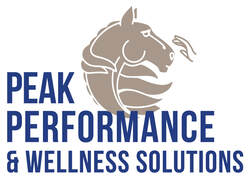

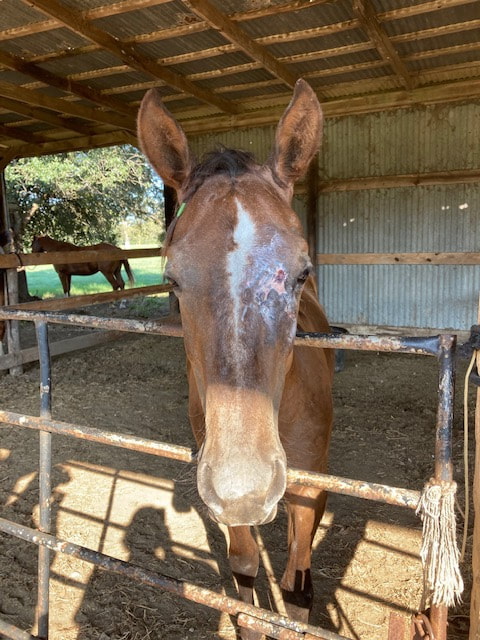
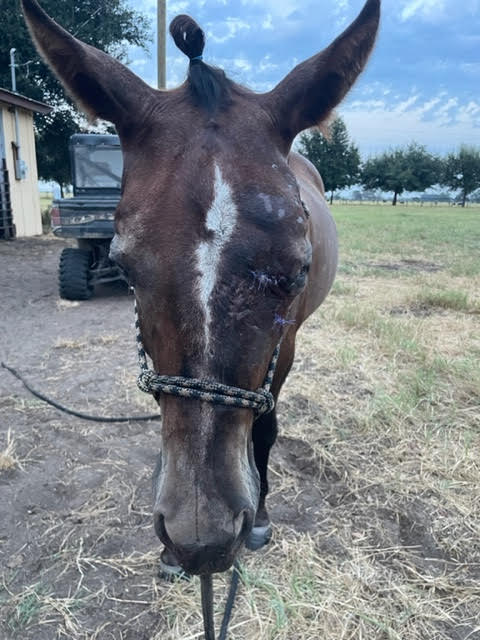
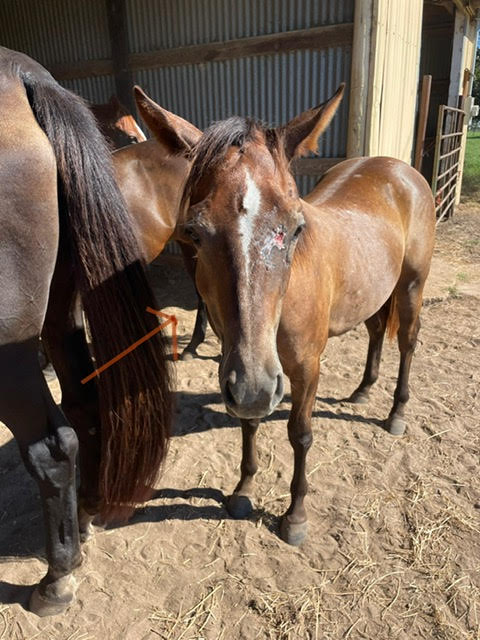
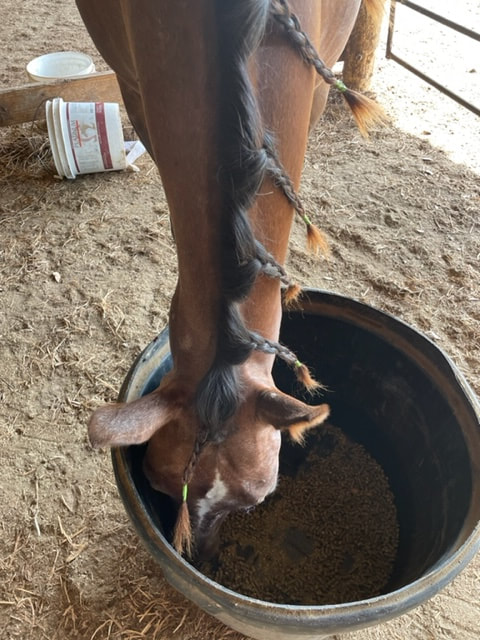
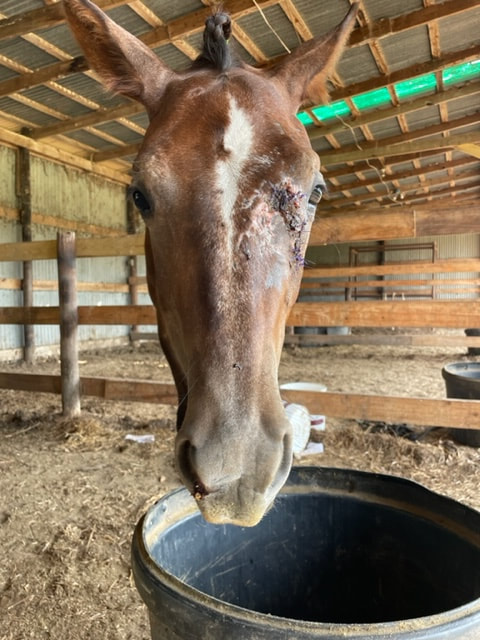
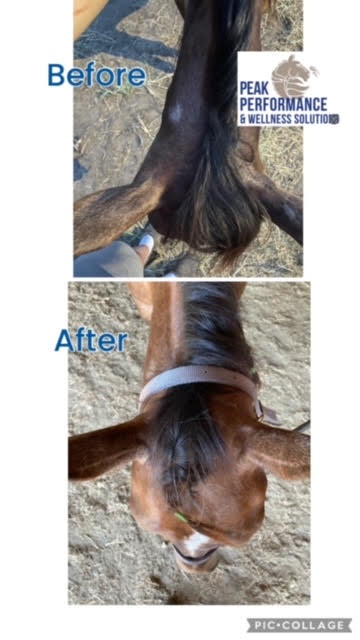

 RSS Feed
RSS Feed


